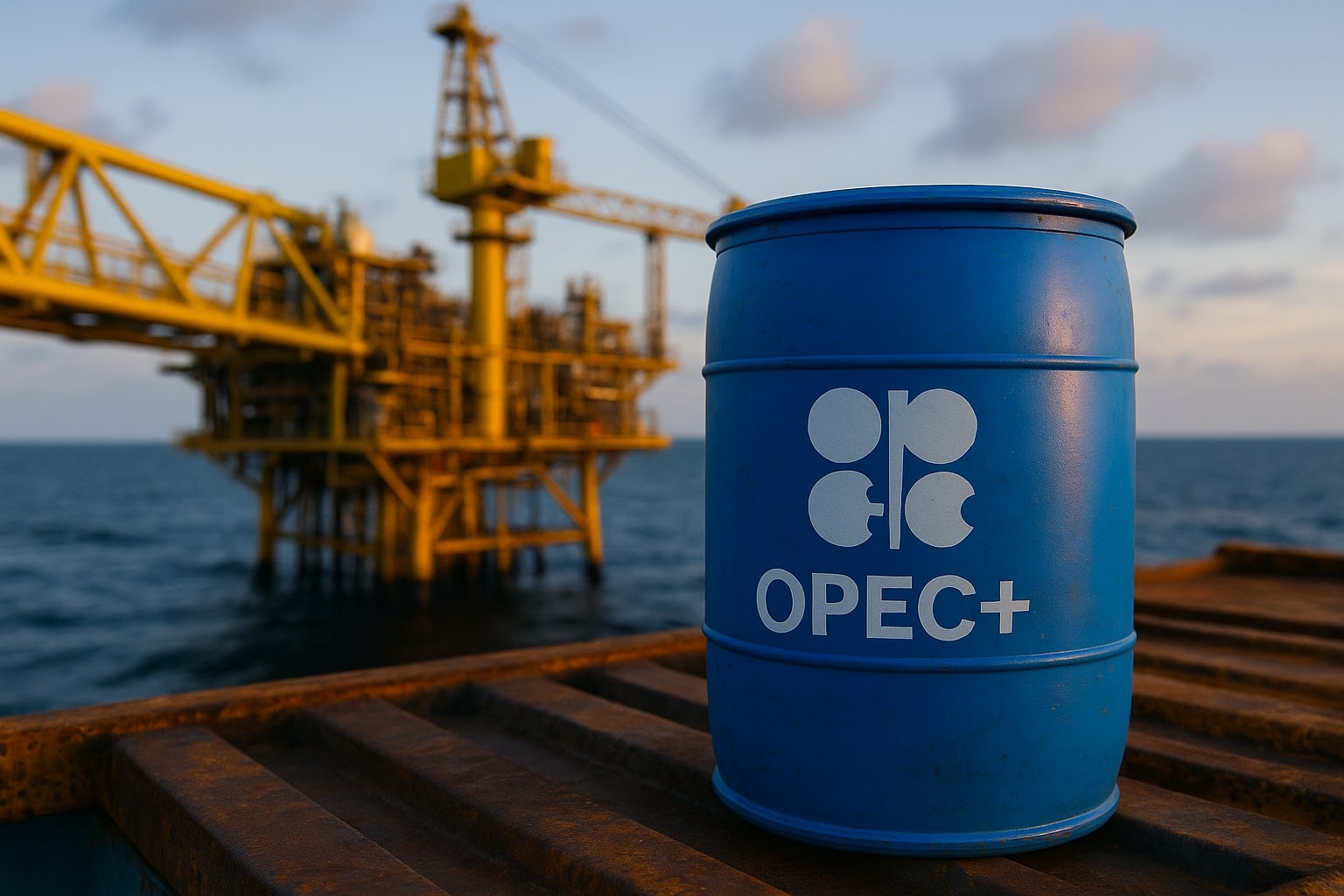
Oil Prices: WTI (CL=F) Holds $63, Brent (BZ=F) Stalls at $67 Amid Surplus
Crude remains range-bound with WTI capped at $65 and Brent below $69 as OPEC+ barrels return, China adds 1 mbd to storage, and EIA forecasts WTI falling to $47 by 2026 | That's TradingNEWS
WTI (CL=F) and Brent (BZ=F) Prices Edge Higher but Range-Bound
WTI crude futures (CL=F) settled near $63.26 per barrel, up 0.91% on the day, while Brent (BZ=F) closed around $67.38, advancing 0.58%. Both benchmarks remain trapped in narrow ranges, with WTI oscillating between $62 and $65, and Brent stuck between $65 and $69, reflecting oversupply fears balanced by geopolitical tensions. The 50-day moving averages, sitting near $64.33 for WTI and $67 for Brent, are providing strong technical resistance, limiting upside momentum despite recent rallies.
OPEC+ Policy Shifts and Rising Supply Weigh on Outlook
HSBC projects a surplus of 1.7 million barrels per day (mbd) in Q4 2025, expanding to 2.4 mbd in 2026, as OPEC+ begins to unwind its voluntary production cuts of 1.65 mbd. This aggressive return of supply could pressure Brent back into the low-$60s, with downside risk if demand growth falters. Russia is expected to struggle meeting quota increases, with forecasts showing 300,000 bpd less output by end-2026, but Saudi Arabia and Iraq are expanding capacity, offsetting Russian weakness. Analysts warn that the easing of OPEC+ discipline risks flooding the market with barrels just as global demand growth slows.
China’s Storage Strategy Keeps Imports Elevated
China processed 14.94 mbd of crude into fuels in August while importing and producing 15.95 mbd, leaving a surplus of 1 mbd added to storage. Since March, stockpiling has averaged nearly 990,000 bpd, pushing Chinese crude imports to the highest levels since 2022. Goldman Sachs expects China to continue adding around 500,000 bpd into reserves across the next five quarters, but analysts caution that stockpiling alone cannot sustain oil prices above $65. The strategic accumulation secures supply but also masks weak underlying demand recovery, reinforcing bearish risks into 2026.
EIA, JPMorgan, and Standard Chartered Diverge on Forecasts
The U.S. EIA now expects WTI to average $64.16 in 2025 before sliding to $47.77 in 2026, signaling long-term bearishness. JPMorgan aligns with this, projecting $63 in 2025 and $54 in 2026, citing persistent oversupply. In contrast, Standard Chartered is more optimistic, forecasting WTI to average $58 in 2025 but climb to $75 in 2026, with prices as high as $80 per barrel by Q4 2026 if demand stabilizes. Macquarie strategists warn that without OPEC tightening, WTI risks breaking into the $50s or lower as inventories build. These starkly different views underscore deep uncertainty in oil’s two-year trajectory.
Iraq’s Production Growth and Infrastructure Projects Add Capacity
TotalEnergies and QatarEnergy have advanced Iraq’s Gas Growth Integrated Project (GGIP), with the Ratawi field moving toward 210,000 bpd by 2028, while the seawater supply project will provide 5 million barrels of water per day to maintain southern Iraq’s well pressure. Early phases of the Ratawi field are set to bring 120,000 bpd online by 2026, coinciding with associated gas output of 300 million cubic feet per day. These additions expand Iraq’s role in global supply just as OPEC+ attempts to balance markets, further complicating the supply-demand equation heading into 2026.
Geopolitical Risk Premium Remains but Fails to Lift Prices
Attacks on Russian energy infrastructure and NATO debates over further sanctions briefly lifted crude earlier this week, but the moves were contained, adding less than $1 per barrel to benchmarks. U.S. calls for tariffs on Chinese and Indian imports of Russian oil highlight tensions, yet the market response has been muted, with traders prioritizing fundamentals over politics. Even with heightened Middle East risks and Ukrainian drone strikes on Russian refineries, WTI remains below $65, showing that surplus supply continues to dominate the pricing narrative.
Investment View: Oil Stuck Between Supply Glut and Fragile Support
The data paints a market oversupplied into 2026, with WTI near $63 and Brent at $67 facing strong headwinds. Technical resistance above $65 for WTI and $69 for Brent is proving resilient, while downside pressure grows from swelling inventories. China’s stockpiling provides temporary demand support but cannot offset the looming OPEC+ unwind. With EIA and JPMorgan targeting mid-$40s to $50s for 2026, and Standard Chartered calling for $75–$80, the spread in forecasts is wide. For now, crude looks vulnerable, and the setup favors a Hold stance on oil, as volatility driven by geopolitics may offer short-term rallies, but the longer-term trajectory points toward lower averages unless OPEC+ reimposes discipline.
That's TradingNEWS
Read More
-
UCO ETF Price Forecast: Can NYSEARCA:UCO at $18.57 Ride a 2026 Oil Squeeze?
18.12.2025 · TradingNEWS ArchiveStocks
-
XRPI at $10.50 and XRPR at $14.93 Hit XRP ETF Lows While XRP-USD Holds $1.84 After 30 Days of Inflows
18.12.2025 · TradingNEWS ArchiveCrypto
-
Natural Gas Price Forecast: Henry Hub Holds Around $4 as EIA Draw Hits 167 Bcf
18.12.2025 · TradingNEWS ArchiveCommodities
-
USD/JPY Price Forecast: Pair Holds Above 155 As BoJ And US CPI Set Up A Major Break
18.12.2025 · TradingNEWS ArchiveForex



















